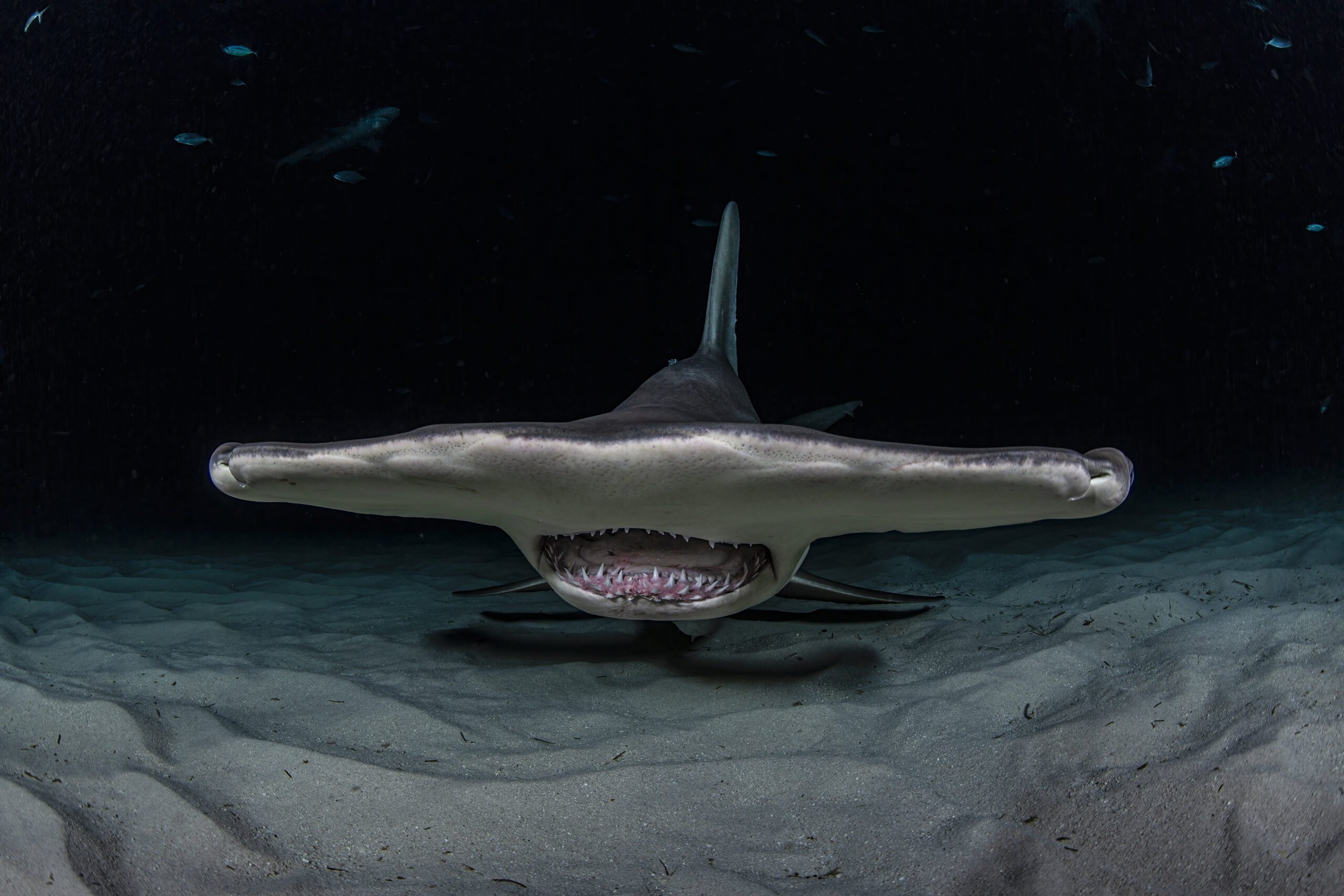Vanishing variety: “Unusual” sharks face highest extinction risk – Oceanographic Magazine

Report on Shark Extinction Risk and Implications for Sustainable Development Goals
1.0 Introduction: Assessing Marine Biodiversity Loss
A recent study analyzed extinction risk patterns in sharks, providing critical data for the advancement of Sustainable Development Goal 14 (Life Below Water). By examining over 1,200 teeth from 30 species of the genus Carcharhinus, researchers have identified key morphological indicators that correlate with species vulnerability. This report outlines the study’s findings and their direct relevance to global conservation targets.
2.0 Key Findings on Species Vulnerability
The research establishes a direct link between physical traits and extinction risk, highlighting a significant challenge to SDG 14, which aims to conserve and sustainably use marine resources.
- Correlation with Morphology: Tooth form and size, which serve as reliable indicators of diet and body type, were found to correlate closely with a species’ vulnerability to extinction.
- Risk for Specialists: Species with specialized feeding habits or unusual morphologies face the highest extinction risks. This trend threatens the functional diversity of marine ecosystems.
- IUCN Status: Of the 35 recognized Carcharhinus species, 25 are already listed by the IUCN as “Vulnerable,” “Endangered,” or “Critically Endangered,” underscoring the urgency required to meet SDG Target 14.2 (sustainably manage and protect marine ecosystems).
3.0 Ecosystem Consequences and Phenotypic Homogenization
The loss of specialist shark species contributes to a trend known as phenotypic homogenization, where ecosystems become dominated by generalist species. This reduction in biodiversity has cascading consequences that undermine ecosystem resilience, a core principle of both SDG 14 (Life Below Water) and SDG 15 (Life on Land).
- Loss of Functional Diversity: The removal of specialist predators disrupts the ecological balance, weakening the ecosystem’s ability to withstand environmental changes.
- Parallels with Terrestrial Ecosystems: This phenomenon mirrors biodiversity loss observed on land, such as the decline of vultures leading to an increase in carrion, which impacts ecosystem health.
- Threat to Marine Habitats: The loss of key predators can lead to trophic cascades, potentially damaging critical habitats like coral reefs and further jeopardizing the goals of SDG 14.
4.0 Addressing Threats in Alignment with SDG Targets
The report identifies overfishing as the primary threat to shark populations. Addressing this challenge is essential for achieving SDG Target 14.4, which calls for an end to overfishing and the implementation of science-based management plans.
- Primary Threat: Overfishing remains the single greatest, yet most addressable, threat to shark survival.
- Pathways to Recovery: The study emphasizes that recovery is possible through concerted efforts. The successful rebound of the northern elephant seal population from near-extinction demonstrates that conservation measures can be highly effective.
- Call for Global Cooperation: Achieving meaningful change requires stronger policy and global cooperation, directly aligning with SDG 17 (Partnerships for the Goals). With the right actions, significant positive change for shark populations could be realized within decades.
Analysis of Sustainable Development Goals in the Article
-
Which SDGs are addressed or connected to the issues highlighted in the article?
The article primarily addresses issues related to two Sustainable Development Goals:
- SDG 14: Life Below Water: This is the most prominent SDG, as the entire article focuses on the extinction risk of shark species, the health of marine ecosystems, the impact of overfishing, and the need for conservation of marine life. The discussion revolves around protecting marine biodiversity and the consequences of its loss.
- SDG 17: Partnerships for the Goals: The article touches upon this goal by highlighting the solution to the problem. It states that the threat of overfishing is “addressable through stronger policy and global cooperation,” emphasizing the need for collaborative action among nations and stakeholders to achieve conservation outcomes.
-
What specific targets under those SDGs can be identified based on the article’s content?
Based on the article’s text, the following specific targets can be identified:
- Target 14.2: “By 2020, sustainably manage and protect marine and coastal ecosystems to avoid significant adverse impacts, including by strengthening their resilience, and take action for their restoration in order to achieve healthy and productive oceans.” The article connects to this by describing how the loss of specialist shark species leads to “phenotypic homogenization” and a “loss of functional diversity,” which weakens the resilience of marine ecosystems.
- Target 14.4: “By 2020, effectively regulate harvesting and end overfishing, illegal, unreported and unregulated fishing and destructive fishing practices…” This target is directly addressed when the article explicitly states, “Overfishing remains the single greatest threat” to shark populations. The call to address this threat aligns perfectly with the goal of regulating harvesting and ending overfishing.
- Target 14.5: “By 2020, conserve at least 10 per cent of coastal and marine areas…” The article’s focus on the conservation of endangered shark species, citing the IUCN’s classification of 25 Carcharhinus species as “Vulnerable,” “Endangered,” or “Critically Endangered,” directly relates to the broader goal of marine conservation. The success story of the northern elephant seal, which recovered after “hunting bans took effect,” serves as an example of effective conservation action.
- Target 17.16: “Enhance the global partnership for sustainable development…” The article implies this target by suggesting that the solution to overfishing requires “stronger policy and global cooperation.” This points to the necessity of international partnerships to implement effective conservation strategies and regulations.
-
Are there any indicators mentioned or implied in the article that can be used to measure progress towards the identified targets?
The article mentions or implies several indicators that can be used to measure progress:
- IUCN Red List Status: The article explicitly uses the International Union for Conservation of Nature (IUCN) Red List as an indicator of extinction risk, noting that “25 are listed by the… IUCN as ‘Vulnerable,’ ‘Endangered,’ or ‘Critically Endangered.'” This serves as a direct indicator for the conservation status of marine species, relevant to measuring the health of marine ecosystems (Target 14.2) and the effectiveness of conservation efforts (Target 14.5).
- Population Rebound of Protected Species: The example of the northern elephant seal, whose “population has rebounded to more than 150,000 after hunting bans took effect,” is a clear indicator of successful conservation. Tracking the population numbers of threatened species like sharks would be a key metric to measure the success of ending overfishing (Target 14.4) and implementing conservation actions.
- Implementation of Policies and Bans: The article implies that the existence and enforcement of policies are crucial indicators. The mention of “stronger policy” and the effectiveness of “hunting bans” for seals suggest that tracking the adoption and enforcement of national and international regulations against overfishing is a key indicator of progress towards global cooperation (Target 17.16) and sustainable fishing (Target 14.4).
SDGs, Targets and Indicators
| SDGs | Targets | Indicators (Identified or Implied in the Article) |
|---|---|---|
| SDG 14: Life Below Water | Target 14.2: Sustainably manage and protect marine and coastal ecosystems. | The conservation status of species on the IUCN Red List (e.g., the 25 Carcharhinus species listed as threatened). |
| SDG 14: Life Below Water | Target 14.4: End overfishing and restore fish stocks. | The identification of overfishing as the “single greatest threat”; the population recovery of species after protective measures are implemented (e.g., northern elephant seals). |
| SDG 14: Life Below Water | Target 14.5: Conserve coastal and marine areas. | The number of species classified as “Vulnerable,” “Endangered,” or “Critically Endangered,” indicating the need for conservation action. |
| SDG 17: Partnerships for the Goals | Target 17.16: Enhance the global partnership for sustainable development. | The call for “stronger policy and global cooperation” to address overfishing; the implementation of effective policies like hunting bans. |
Source: oceanographicmagazine.com
What is Your Reaction?
 Like
0
Like
0
 Dislike
0
Dislike
0
 Love
0
Love
0
 Funny
0
Funny
0
 Angry
0
Angry
0
 Sad
0
Sad
0
 Wow
0
Wow
0



















































.jpg.webp?itok=0ZsAnae9#)

























